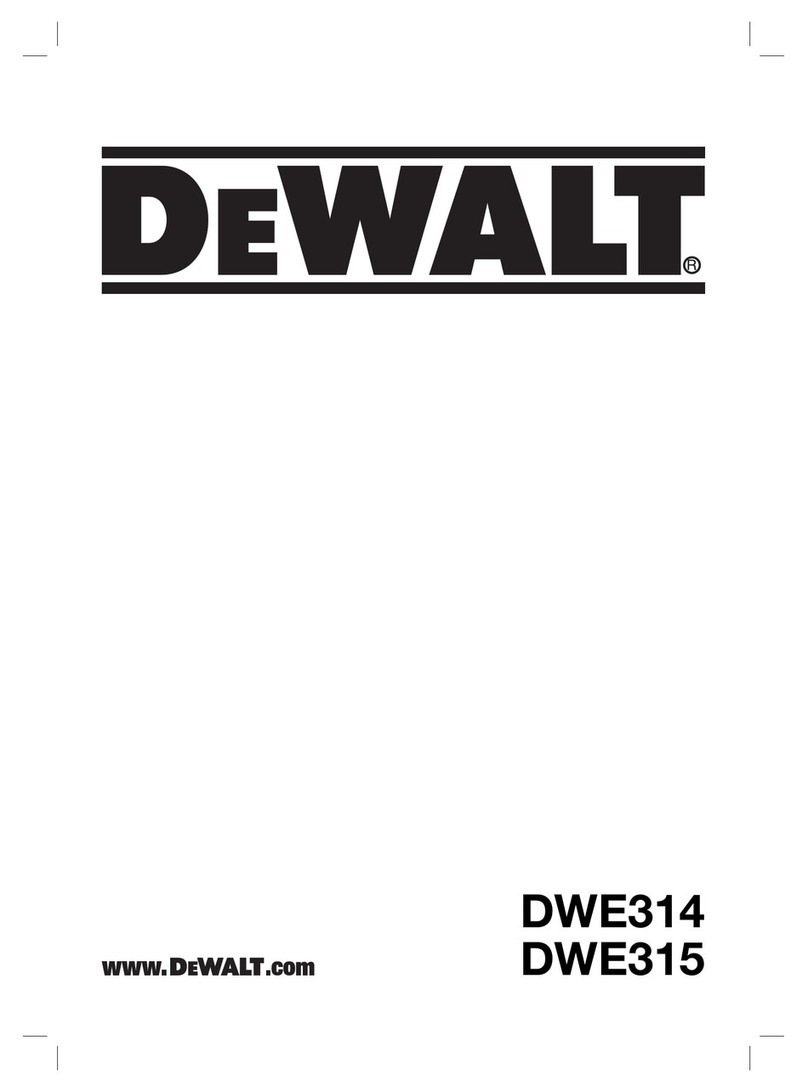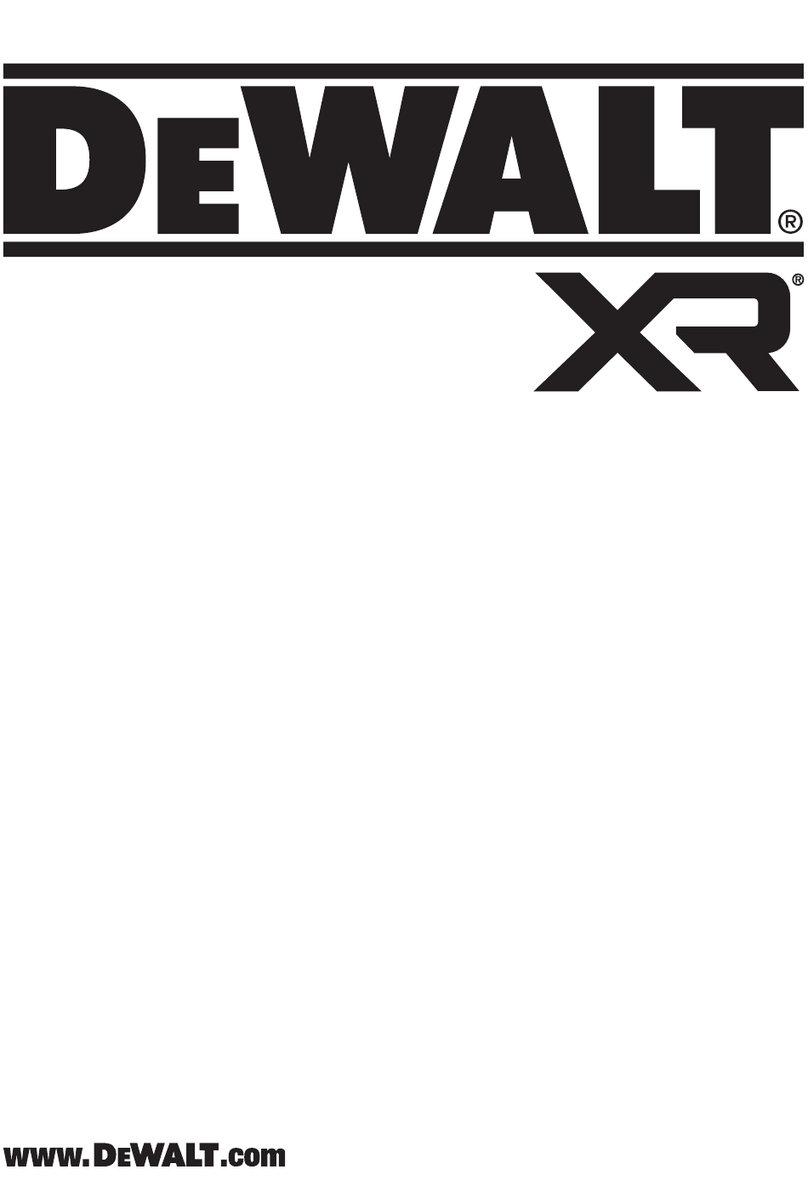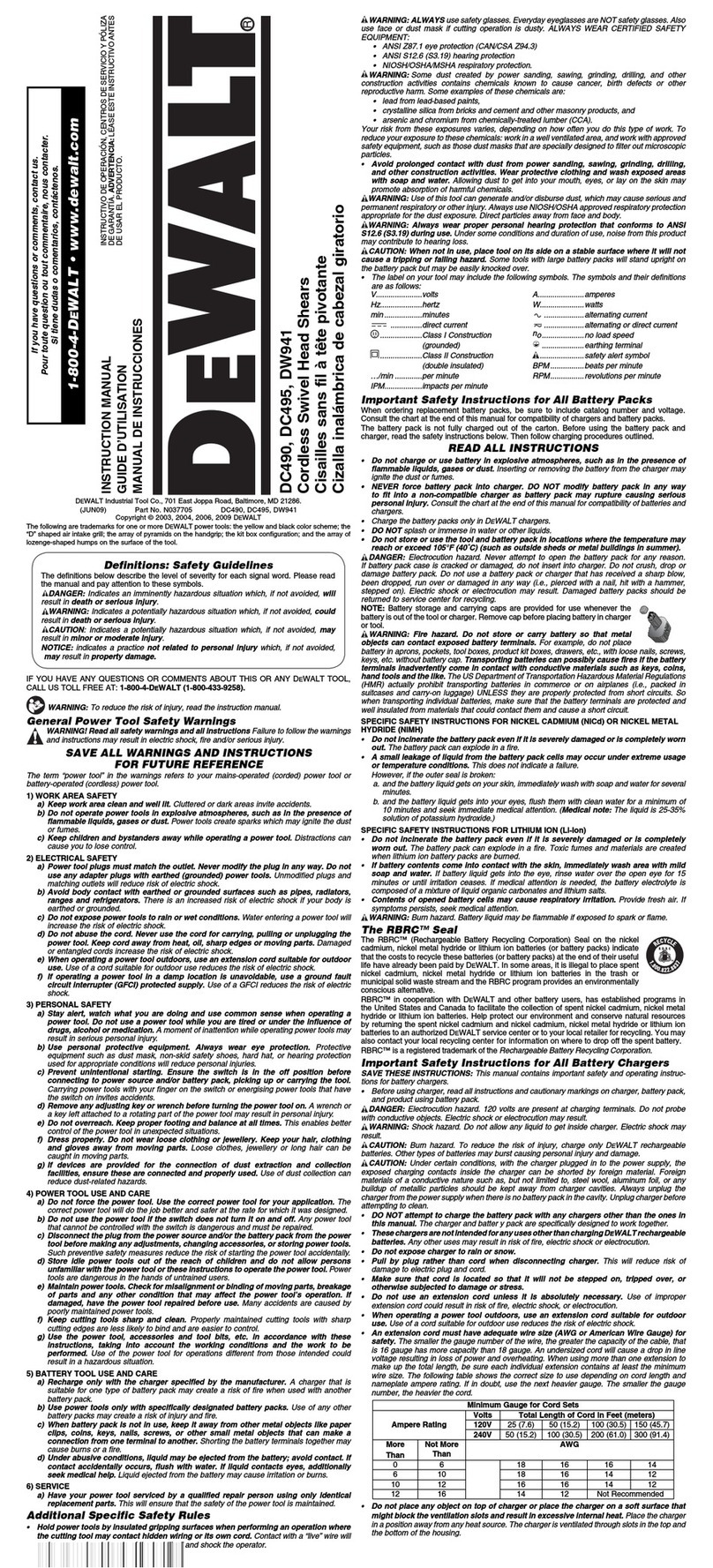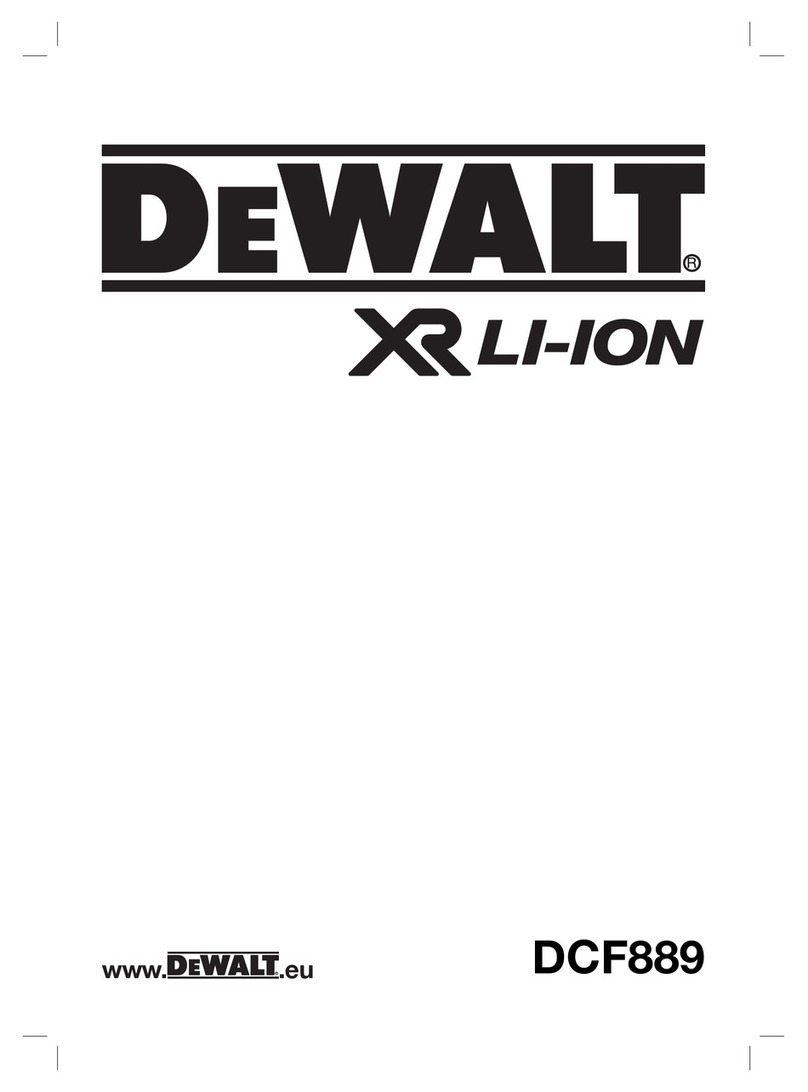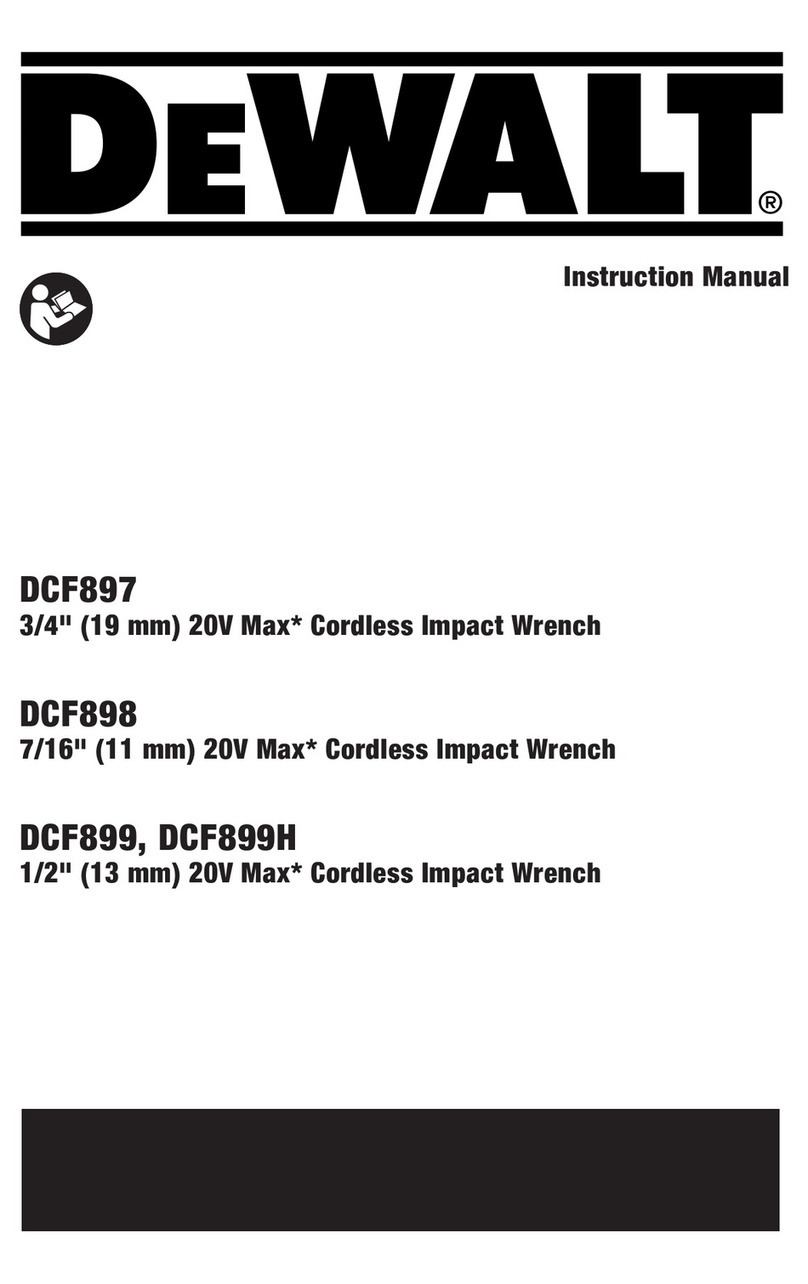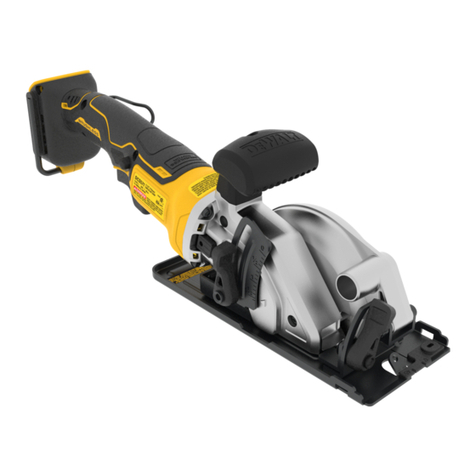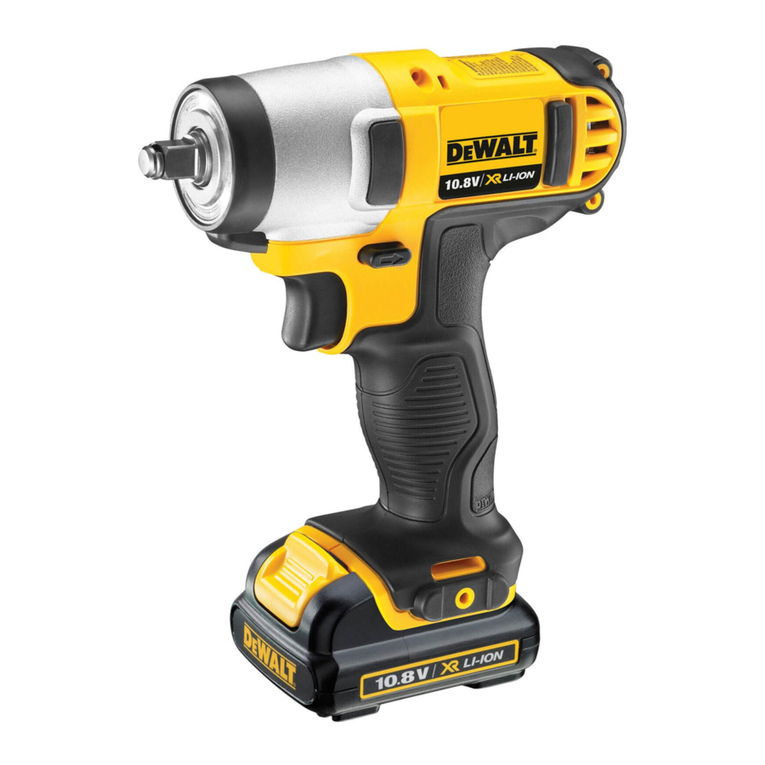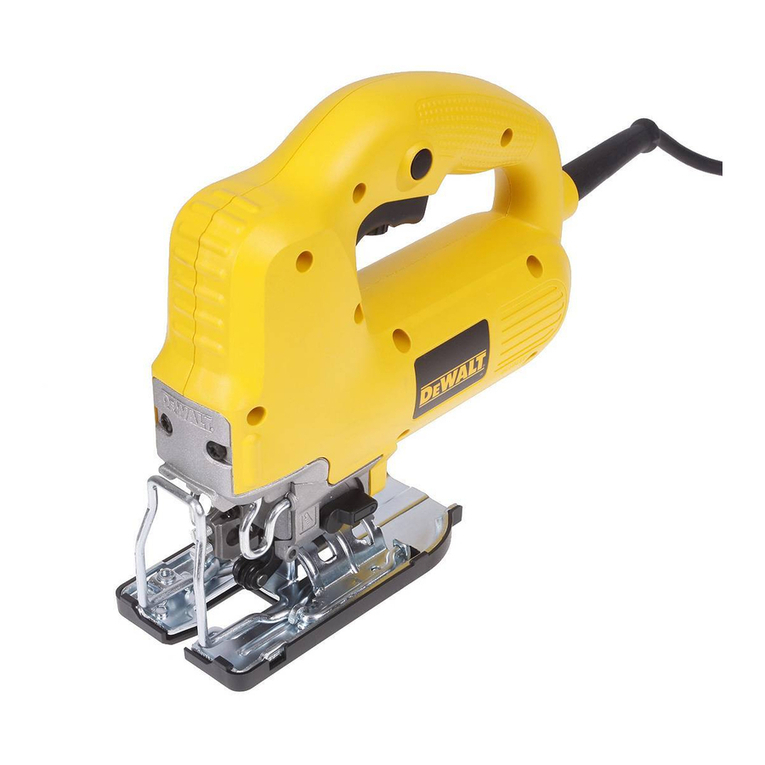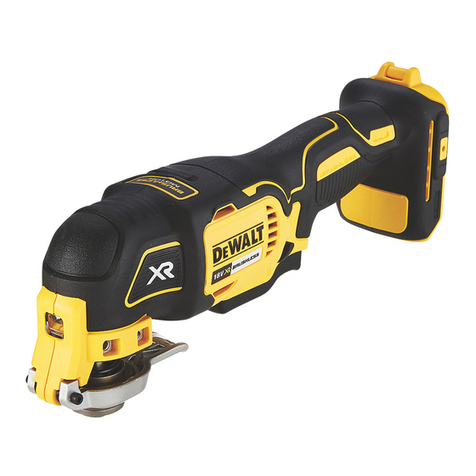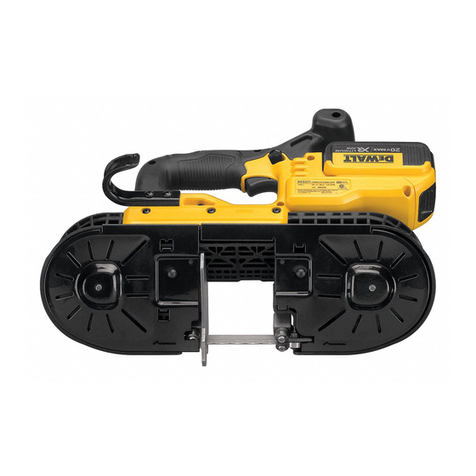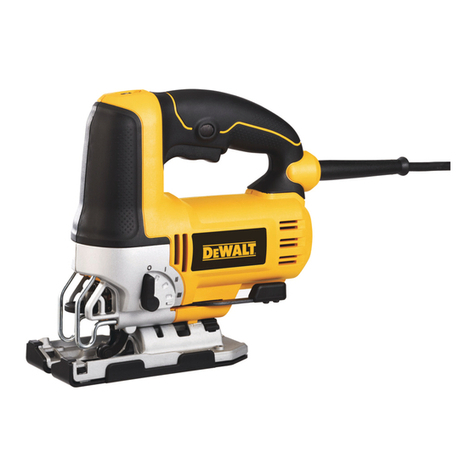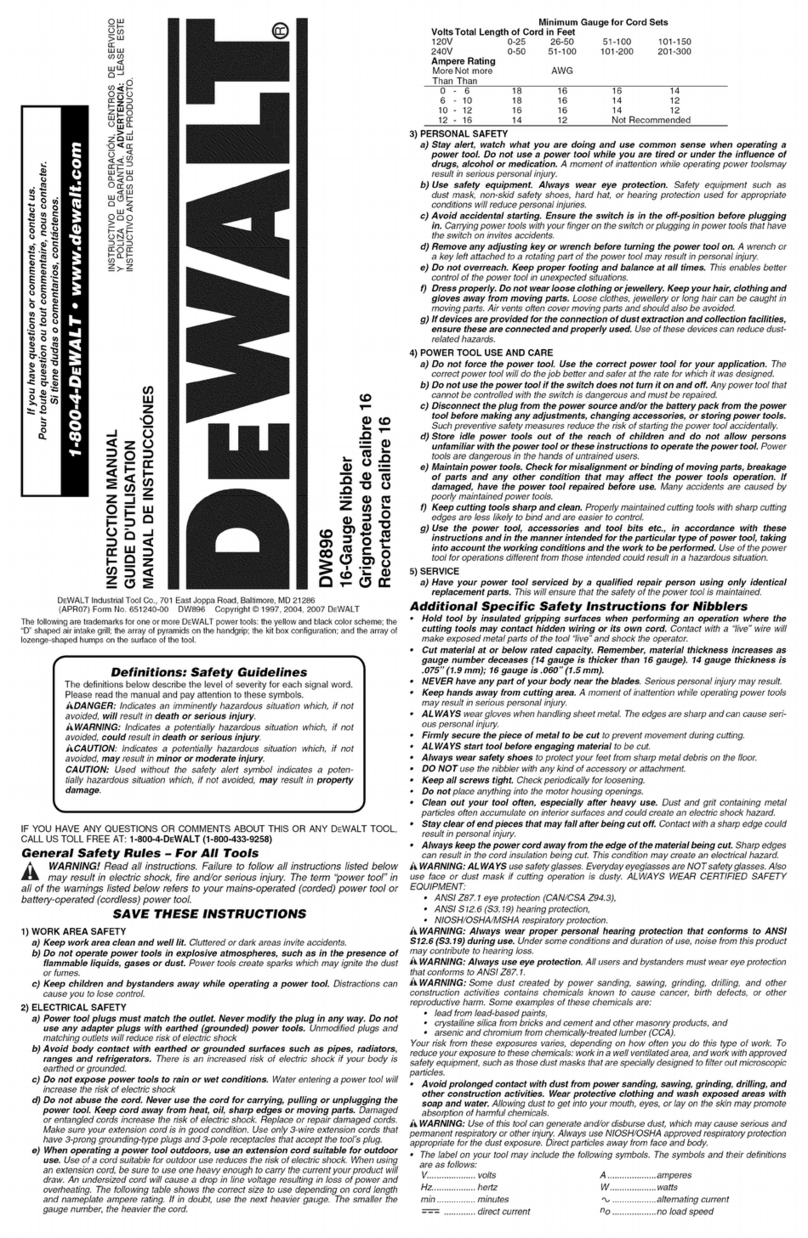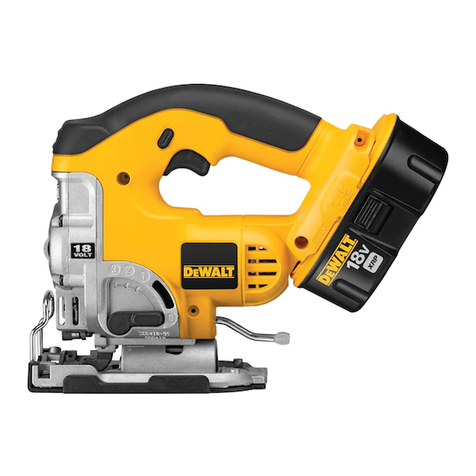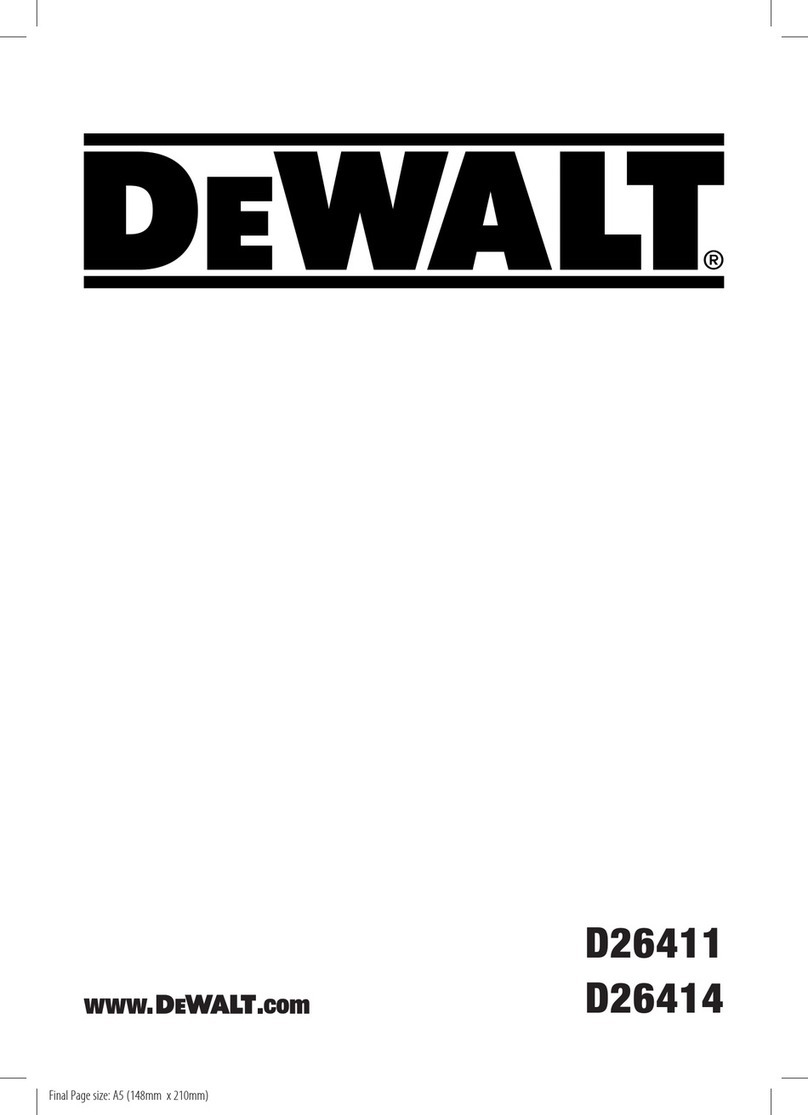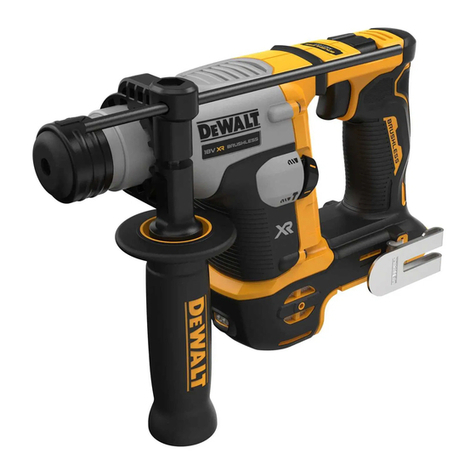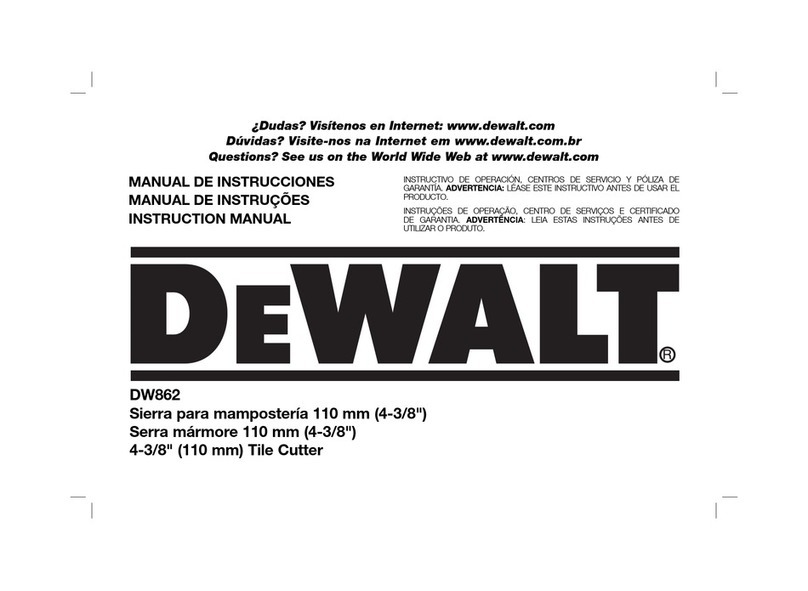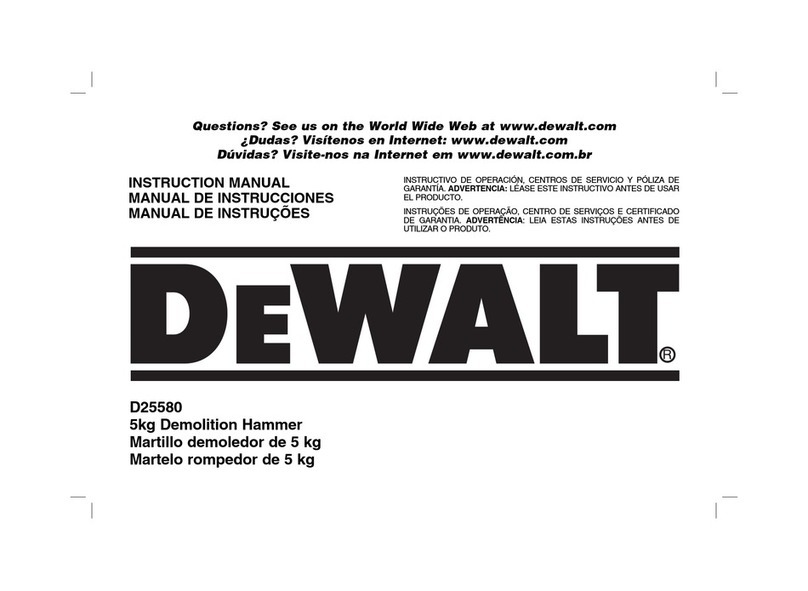
ENGLISH
3
into account the working conditions and the
work to be performed. Use of the power tool for
operations different from those intended could result
in a hazardoussituation.
5) Service
a ) Have your power tool serviced by a qualified
repair person using only identical replacement
parts. This will ensure that the safety of the power
tool ismaintained.
Additional Safety Rules for a Drill Presses
• Always use the safety chain. Mounting can release.
If mounting surface does not allow the use of the
chain, then secure the unit by another means such
as a clamp. Electrical power may fail or unit may
accidentallydisconnect.
• Use clamps or other practical way to secure and
support the workpiece to a stable platform. Holding
the work by hand or against your body is unstable and
may lead to loss ofcontrol.
• Keep your fingers well out of the drillarea.
• The magnetic base is suitable for use on steel with a
thickness of at least 3/8" (10mm), with no visible air gap
between the magnet bottom surface and the mounting
surface. Curvature, coats of paint and surface irregularities
will create an air gap. Keep the air gap to a minimum. Air
gaps between the magnet and working surface weakens
the magnetic holdingstrength.
• Always place the magnet base on a flat surface. Do not
clamp the base on small or irregularly shapedobjects.
• Always place the magnet base on a surface that is clear of
shavings, chips, swarf and surfacedirt.
• Keep the magnet clean and free of debris andswarf.
• Do not switch on the motor until the drill has been
mounted and installed according to theinstructions.
• Do not switch on the motor before having checked that
the magnetic base has been tightened firmly to the
mountingsurface.
• Before switching on the motor, make sure the accessory
has been mountedcorrectly.
• Always use the recommended speed for the accessories
and thematerial.
• Do not use the machine on the same workpiece on which
electric welders are beingused.
• Use only an appropriate cuttingfluid.
• Do not use liquid cutting fluids while drilling vertical
surfaces or overhead. Dip the cutter in cutting paste or
apply an appropriate spray for theseapplications.
• Do not pour cutting fluid into the reservoir while it is
mounted on the drill. Do not allow cutting fluid to enter
the drillmotor.
CAUTION: Extremely powerful magnet. Keep away
from pacemakers, defibrillators, medical equipment,
computers, computer disks, cassette tapes, engine
control modules, etc.
CAUTION: Do not use feed handle or power cord
to liftunit.
CAUTION: After switching power to the magnet off,
the magnetic base will continue to adhere to the
surface for a moment before releasing. A light blow
• An extension cord must have adequate wire size
(AWG or American Wire Gauge) for safety. The smaller
the gauge number of the wire, the greater the capacity
of the cable, that is 16 gauge has more capacity than 18
gauge. An undersized cord will cause a drop in line voltage
resulting in loss of power and overheating. When using
more than one extension to make up the total length,
be sure each individual extension contains at least the
minimum wire size. The following table shows the correct
size to use depending on cord length and nameplate
ampere rating. If in doubt, use the next heavier gauge. The
smaller the gauge number, the heavier thecord.
Minimum Gauge for Cord Sets
Volts Total Length of Cord in Feet
(meters)
120 V 25 (7.6) 50 (15.2) 100 (30.5) 150 (45.7)
240 V 50 (15.2) 100 (30.5) 200 (61.0) 300 (91.4)
Ampere Rating
American Wire Gauge
More
Than
Not
More
Than
0 6 18 16 16 14
610 18 16 14 12
10 12 16 16 14 12
12 16 14 12 Not Recommended
Additional Safety Information
WARNING: ALWAYS use safety glasses. Everyday
eyeglasses are NOT safety glasses. Also use face or
dust mask if cutting operation is dusty. ALWAYS WEAR
CERTIFIED SAFETYEQUIPMENT:
• ANSI Z87.1 eye protection (CAN/CSA Z94.3),
• ANSI S12.6 (S3.19) hearing protection,
• NIOSH/OSHA/MSHA respiratoryprotection.
WARNING: Some dust created by power sanding,
sawing, grinding, drilling, and other construction
activities contains chemicals known to the State
of California to cause cancer, birth defects or
other reproductive harm. Some examples of these
chemicalsare:
• lead from lead-based paints,
• crystalline silica from bricks and cement and other
masonry products, and
• arsenic and chromium from chemically-
treatedlumber.
Your risk from these exposures varies, depending on how
often you do this type of work. To reduce your exposure to
these chemicals: work in a well ventilated area, and work with
approved safety equipment, such as those dust masks that are
specially designed to filter out microscopicparticles.
• Avoid prolonged contact with dust from power
sanding, sawing, grinding, drilling, and other
construction activities. Wear protective clothing and
wash exposed areas with soap and water. Allowing
dust to get into your mouth, eyes, or lay on the skin may
promote absorption of harmfulchemicals.

